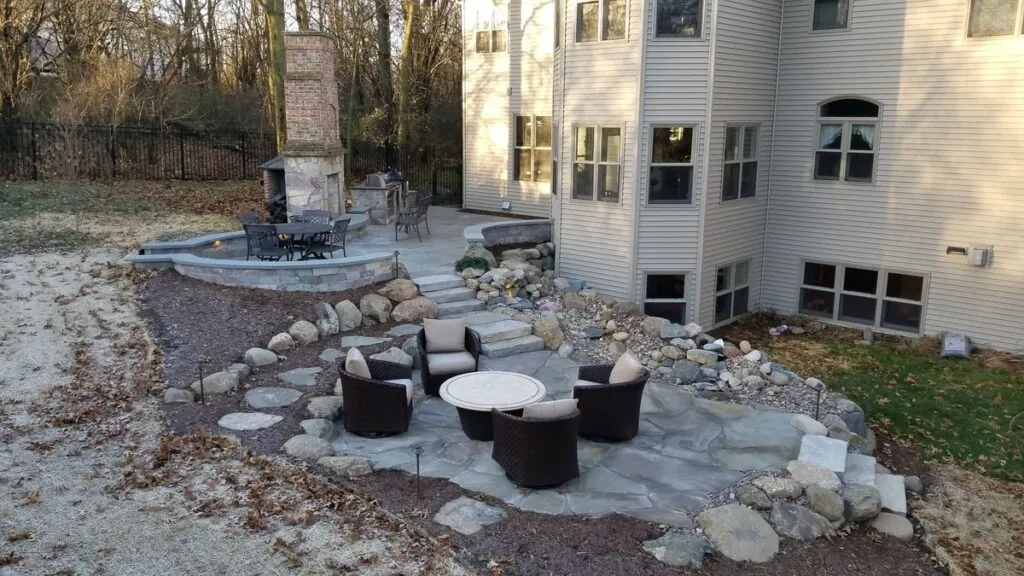
6 Things You Should Know About Lawn Aeration
Annual aeration can be the difference between a good lawn & one your neighbors will be envious of. Most customers ask about aerating when their lawn is already compacted or suffering from bare spots but we believe in proactively including it in your yearly lawn maintenance plan.
High quality fertilizers & appropriate watering schedules are more effective if they make their way deep into the root systems. Without space in the soil to circulate air, moisture and nutrients your efforts might be trickling down the nearest storm drain. See below for our top 6 things you should know about aeration.
 1 – Stop, Drop & Don’t Roll.
1 – Stop, Drop & Don’t Roll.
If you’re thinking about rolling your lawn, aerate instead. We know it can be tempting to want to “smooth out” the lumps and bumps in your lawn, but you’re asking for trouble when you roll. Although you succeed in “flattening” your lawn, it comes at a cost: compaction. Instead, consider a double or triple pass aeration to jump start a more even lawn.
 2 – Aeration + Overseeding = Superior Germination.
2 – Aeration + Overseeding = Superior Germination.
We would never recommend overseeding a lawn without a double pass aeration. Aeration creates thousands of tiny seed beds and drastically improves seed to soil contact – a critical ingredient in any successful overseeding service.
 3 — Fight Weeds Without Herbicide.
3 — Fight Weeds Without Herbicide.
One of the best ways to tackle and prevent weeds is by crowding them out. Crabgrass and weeds have weaker root systems than healthy turf. If you’re diligent about maintaining a full lawn you’ll see less invasives over time.
 4 – Timing Is Everything.
4 – Timing Is Everything.
We think fall is a more advantageous time to aerate (and seed) than spring. Springtime aeration & seeding means you can’t use pre-emergents or weed control without potentially damaging the seed. Spring lawns are notoriously soggy which means there’s a risk of minor turf damage. By fall, you’ve had an entire growing season to keeps weeds at bay. The residual ground temperatures are warmer, creating ideal growing conditions for seed.
5 – What About Those Pesky Plugs?
Although your lawn will have a layer of little “cores” or “plugs” of soil, immediately after aerating, it’s important that they aren’t removed. They will gradually decompose and send nutrients back to the soil. You can speed up the process by mowing over them or breaking them up with a rake (as long as you haven’t overseeded at the same time).
6 – It’s About More Than Looks.
Although aeration and seeding can make your lawn more visually appealing, it’s also giving your turf the opportunity to grown deeper roots. The deeper the roots, the more robust your lawn is and the better it can tolerate drought, disease & pests. Aeration also improves the uptake of fertilizer & amendments, encourages microbial activity and accelerates thatch breakdown.
There’s no magic bullet for a great lawn. Instead, it requires consistency and a comprehensive plan. When aeration & seeding are a part of that plan, you’re on your way to a lawn that keeps up with the neighbor’s.
Current Carrington Clients: Click here to login for an instant quote.
New Client? Email Scott: scott@carringtonlawn.com or click here and go to the blue “Get Started Today” button.


 1 – Stop, Drop & Don’t Roll.
1 – Stop, Drop & Don’t Roll. 2 – Aeration + Overseeding = Superior Germination.
2 – Aeration + Overseeding = Superior Germination. 3 — Fight Weeds Without Herbicide.
3 — Fight Weeds Without Herbicide. 4 – Timing Is Everything.
4 – Timing Is Everything.


